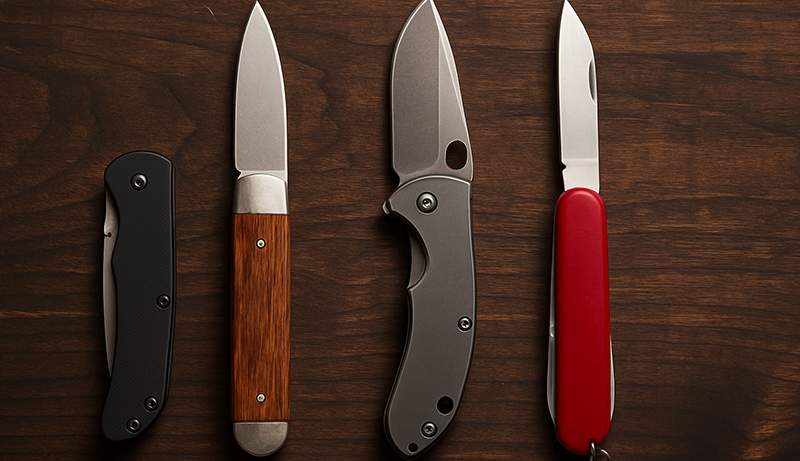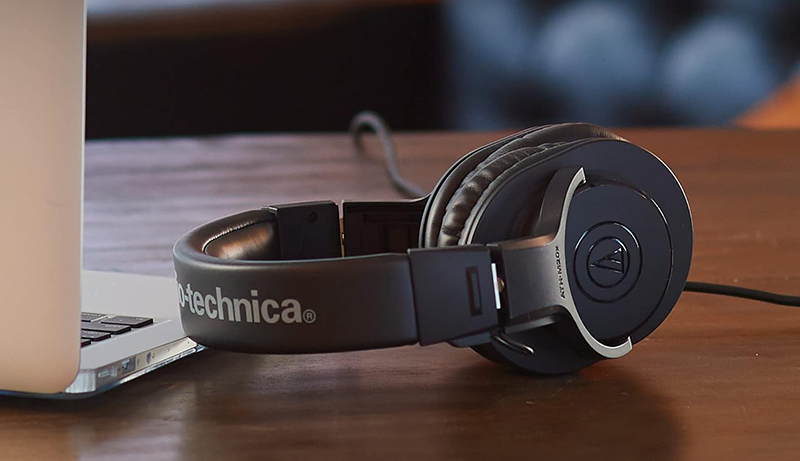Pocket knives have come a long way in recent decades, thanks to advancements in both design and technology. What was once a simple everyday tool has evolved into a highly refined piece of outdoor gear.
Today, pocket knives are a staple in the gear collections of adventurers, DIYers, and everyday users alike. You’ll find them everywhere — from the sleek shelves of outdoor retailers like REI to the checkout counters of your local hardware store. But with so many options available, choosing the right one can feel overwhelming.
A newer trend that’s gaining momentum is the rise of Pocket Fixed Blades, which we’ll explore later on. While the growing variety might not make your decision any easier, we’re here to simplify the process and help you find the knife that fits your needs best.
1. Knafs Lander 2
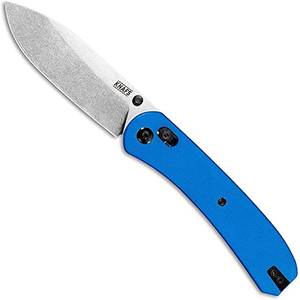
The Knafs Lander 2 is a rugged and reliable alternative to the Benchmade Bugout, designed for users who want a bit more durability without sacrificing portability. While the Bugout excels in lightweight carry, its capabilities are more limited to light- or medium-duty tasks. The Lander 2, weighing just an ounce more, offers a tougher build that’s ready for years of hard use.
Crafted with premium S35VN steel, the Lander 2 delivers excellent edge retention, corrosion resistance, and overall ease of maintenance. It also features the Clutch Lock — Knafs’ take on the proven crossbar lock — offering a secure, smooth mechanism that ensures safe, confident use.
Available in a range of blade finishes and handle scale options, the Lander 2 stands out for its thoughtful balance of size, strength, and performance. Since its release, it’s become a standout in the EDC world, with customization options that make it as personal as it is practical.
2. CIVIVI Yonder
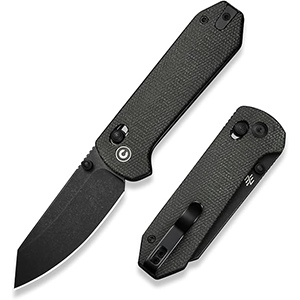
The CIVIVI Yonder is a well-balanced mid-size folding knife designed for everyday carry, featuring Micarta handle scales and a 14C28N stainless steel spey point blade. Its crossbar lock offers solid reliability, while the caged ceramic ball bearings around the pivot ensure smooth, easy blade deployment and closure. At 6.62 inches in overall length, the Yonder is compact yet versatile enough to accommodate hands of all sizes.
The ergonomic design allows users with larger hands to comfortably grip the knife using a three-finger hold, with the pinky wrapping around the butt and the thumb resting securely on the spine jimping. The 14C28N blade steel has become a go-to choice for brands aiming to offer dependable performance without driving up the price. It provides excellent corrosion resistance, decent edge retention, and is easy to sharpen. Altogether, the Yonder delivers a thoughtful blend of functionality, comfort, and value for both casual and frequent users.
3. Victorinox Huntsman
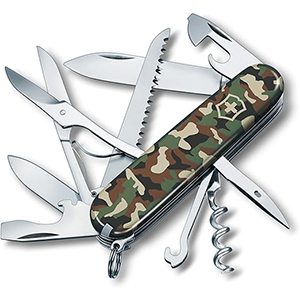
Many people’s first introduction to knives comes through a Swiss Army Knife, often gifted during childhood or a meaningful moment — and no list feels complete without a Victorinox in the mix. While the Hiker was our previous pick, a year of hands-on use has brought the Victorinox Huntsman into the spotlight as the more versatile choice.
Despite occupying the same pocket space as the Hiker, the Huntsman adds practical features like scissors and a multipurpose hook, offering a total of 15 well-thought-out tools without unnecessary extras. The compact screwdriver built into the can opener proves surprisingly capable, even with the absence of a dedicated Phillips head.
Built with stainless Swedish steel, the tools remain reliable and durable even under pressure. The hook proves especially handy around camp, useful for lifting hot pots or pulling tent stakes. If you’re after a refined touch, the Huntsman is also available in a Walnut wood-handled version, adding classic charm to functional design.
4. CIVIVI Sendy 3
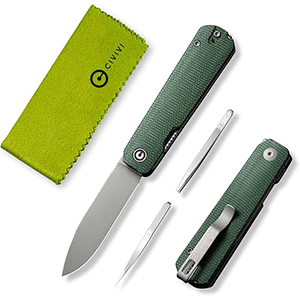
The CIVIVI Sendy, designed by Ben Petersen, captures the charm of traditional pocket knives with a modern twist. It feels like a nostalgic nod to simpler times — the kind of knife you’d carry on a quiet walk through an orchard, slicing into a fresh apple while music from a bygone era plays in the distance. This design blends vintage style with modern functionality.
Offered in both drop point and spey point Nitro-V blade options, the spey variant stands out for its slicing precision and control. The low-profile flipper and smooth, caged bearing action make deployment effortless. Despite its classic look, the Sendy features up-to-date materials, including Nitro-V steel, known for its toughness, edge retention, and ease of sharpening.
Subtle touches like the integrated stainless steel toothpick and tweezers hidden in the handle enhance its everyday practicality. The Sendy delivers a timeless aesthetic, thoughtful details, and quality performance — all at a budget-friendly price.
5. Benchmade Freek 560BK
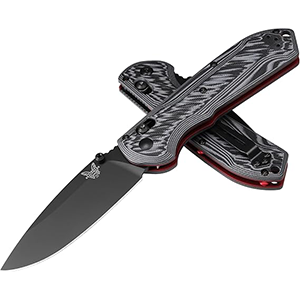
The Benchmade Freek is a standout premium folding knife, built with high-performance materials and a design that caters to both daily use and heavy-duty tasks. Its S90V drop-point blade offers exceptional edge retention and resistance to corrosion and wear, making it one of the most durable steels available today. Though sharpening S90V can be a challenge, it rarely needs attention — and Benchmade’s Lifesharp Guarantee ensures long-term care.
Measuring nearly 8.5 inches in total length, with a 3.5-inch blade, the Freek hits the ideal balance between size and usability. The carbon fiber handle scales, paired with chamfered edges, offer comfort and control for hands of all sizes. Benchmade’s signature Axis Lock provides smooth, secure operation, while the spine’s “RST” style blade ramp allows for confident pressure during tougher tasks.
Though it has been edged out by more budget-friendly options like the Knafs Lander 2, the Freek remains a top-tier choice for serious knife enthusiasts.
Buyer’s Guide: How to Choose the Right Pocket Knife
Choosing the perfect pocket knife involves more than picking the one that looks coolest. From steel composition to handle ergonomics, every detail affects performance, comfort, and reliability. Here’s what to consider:
Knife Steel
Steel options in today’s knife market are more diverse than ever, with new blends released regularly. While it’s best to evaluate each steel individually, they should all offer strong corrosion resistance, abrasion resistance, and edge retention or easy resharpening. Corrosion resistance is essential—especially if you’re using your knife for food prep or outdoor work. A blade that resists wear and maintains its edge will stay functional and safe longer.
Handle Materials
A knife’s handle affects grip, comfort, and control. Here are some common materials:
- G10 & Micarta: Durable, grippy, and reliable in wet or dry conditions. Popular for EDC and survival knives.
- Nylon & Plastic (FRN, Zytel, GRN, GFN, Grivory): Lightweight, strong, and textured for grip. Widely used in affordable models.
- Carbon Fiber: Lightweight and ultra-strong with a modern aesthetic. Found on high-end knives.
- Aluminum & Titanium: Lightweight metals with excellent strength. Aluminum appears in budget knives, while titanium is reserved for premium builds. Both can be slippery when wet.
Ease of Use
How easily and comfortably you can open, close, and hold your knife matters. The design of the lock, hardware, and ergonomics all influence how user-friendly a knife is. If it’s a struggle to use, you’re less likely to carry or rely on it.
Accessibility
The best knife is the one you can actually get to when you need it. Look for pocket clips, carry size, and deployment mechanisms that work with your routine. If it’s not easy to carry or draw, it’s not going to be useful in a pinch.
Ergonomics
A knife should feel natural in your hand. Test the grip, check the handle shape, and see how it responds to pressure. If it feels solid and comfortable during use, you’re more likely to keep it close and put it to work.
Lock Mechanism
The lock is critical to safety and reliability. Common types include:
- Liner/Frame Locks: Use a metal bar to hold the blade open.
- Button Locks: A barrel mechanism keeps the blade secure.
- Crossbar Locks: The most trusted style, using a sliding bar to lock the blade.
Crossbar locks are especially popular due to their strength and ease of use—and they rarely fail unless subjected to extreme force, like being run over by a truck.
Choosing the right knife means balancing function, materials, and comfort. A great knife doesn’t just perform well—it feels like an extension of your hand.

